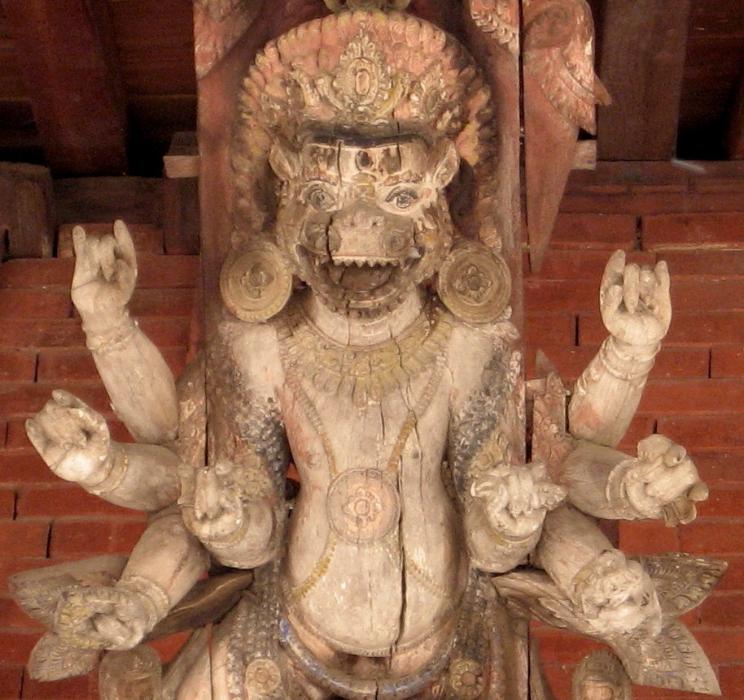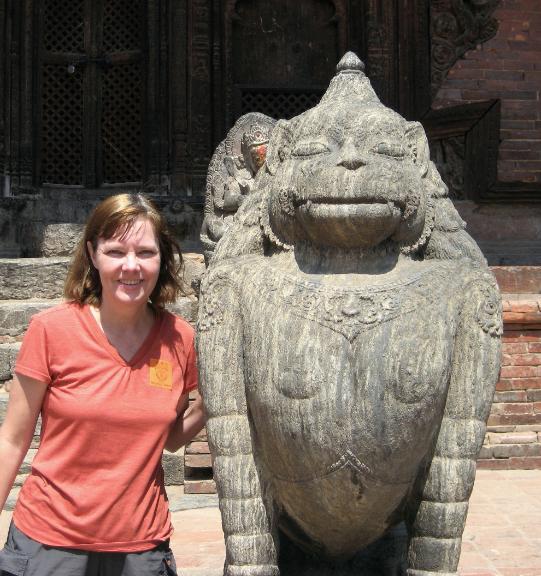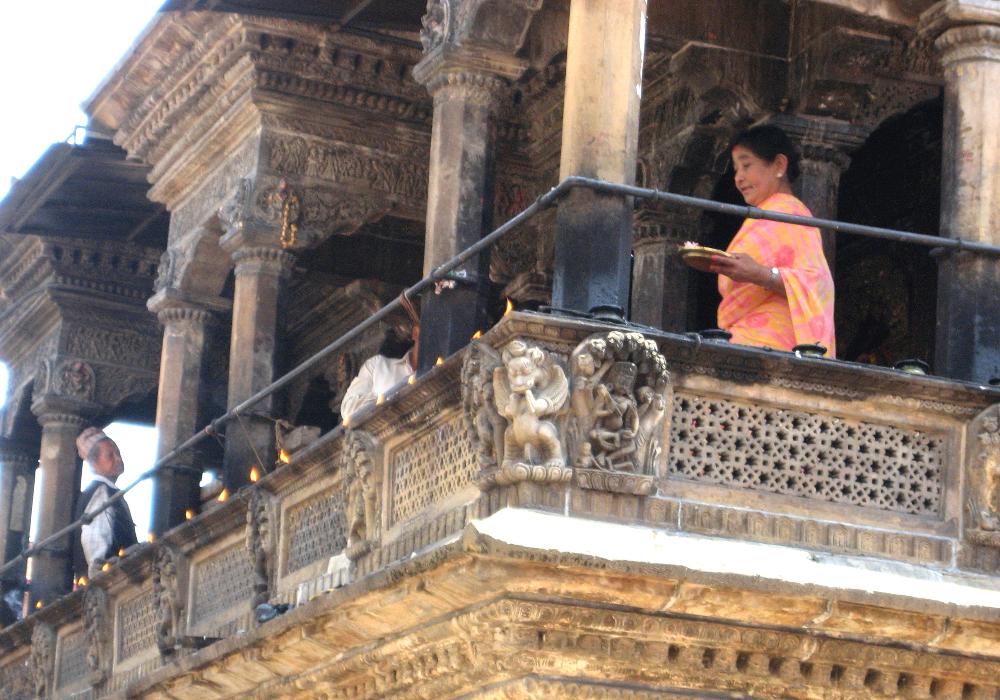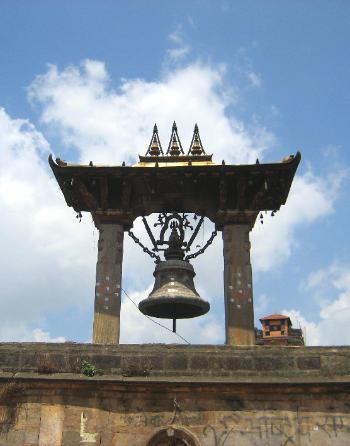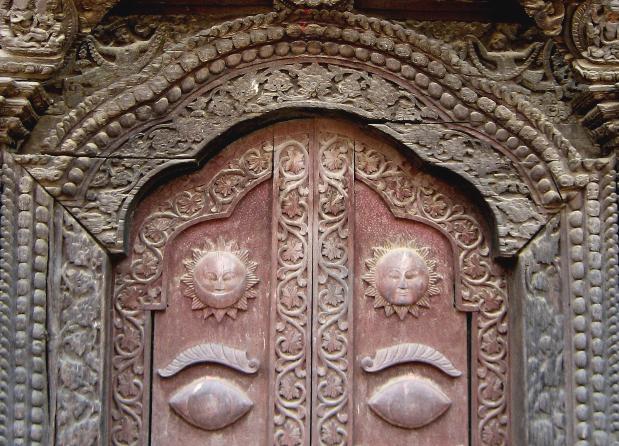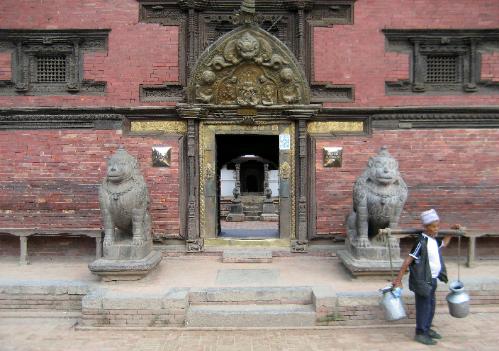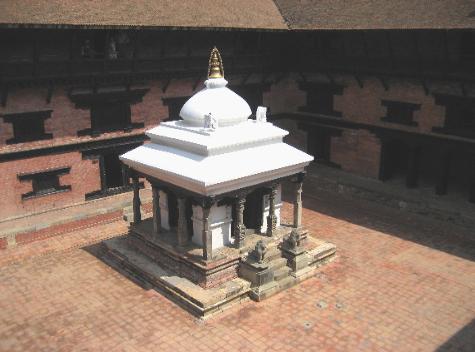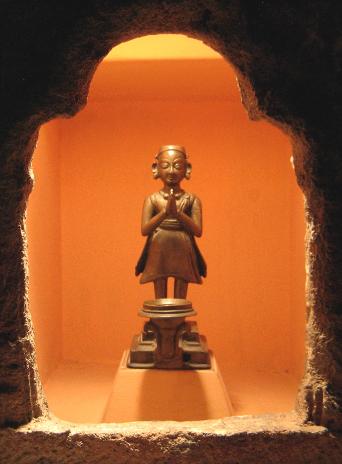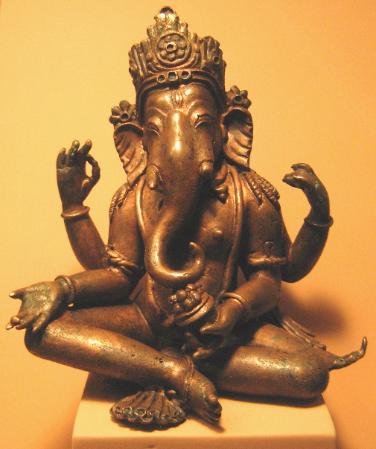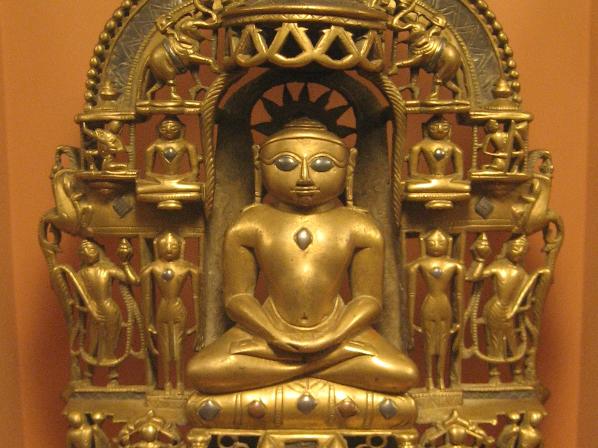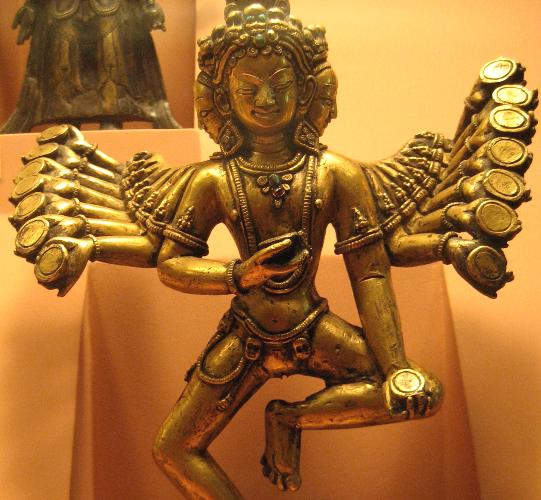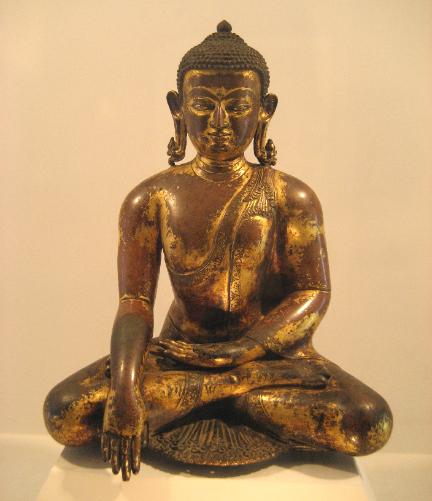
Where We Be
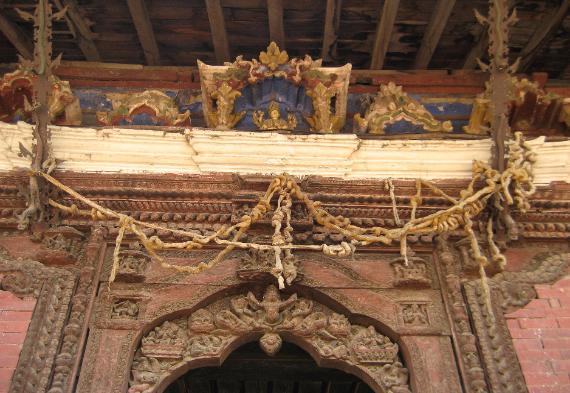
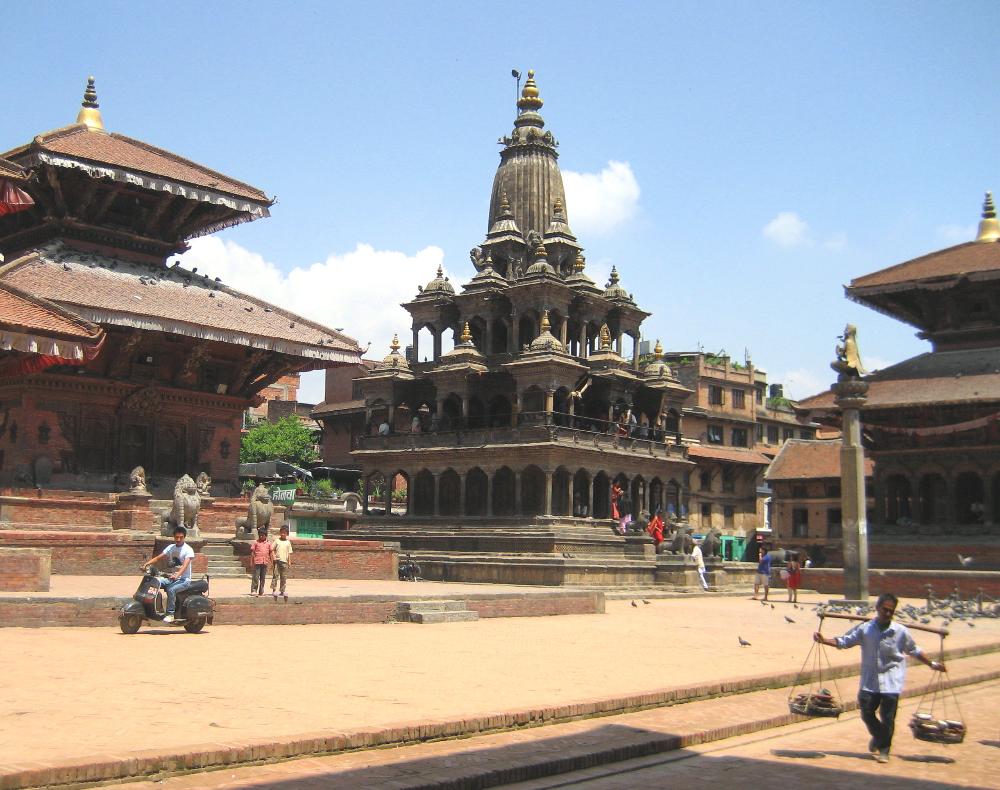
| Looking down on Patan's magnificent Durbar Square from the rooftop patio at Si Taleju restaurant |
| Here we're looking south at the other temples on Patan's Durbar Square |
| Manga Hiti is a sunken cross-shaped water access point |
| Every square inch of wood in the courtyard is lovingly carved with one-of-a-kind iimages |
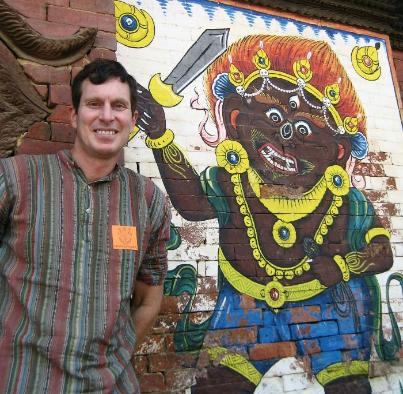
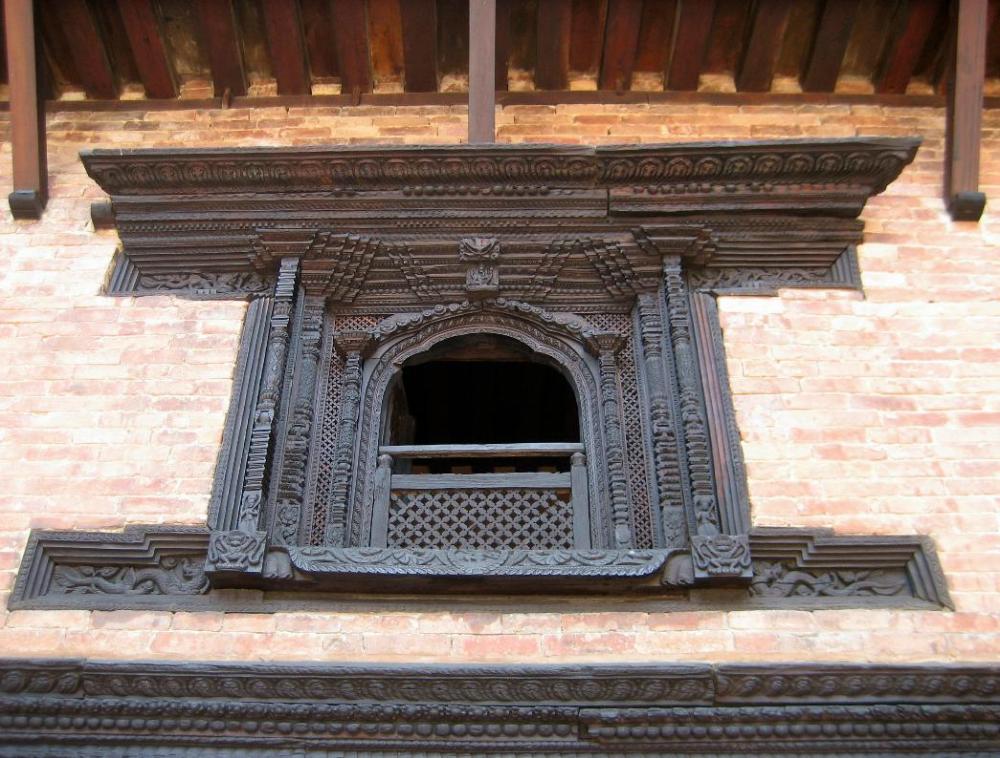
| The first statue we saw as we entered the museum -- small but beautiful |
| I love this alien-looking version of Buddha. Museum curators have picked out 200 pieces of exceptional Nepali art and highlighted each piece with beautiful lighting and signs in English. |
| Shiva dances up a storm. These dancing gods are supposed to be fierce and angry but they look carefree and happy to our eyes. |
| The museum is chock-full of amazing art, and if you read the plaques you get quite the education in all things Hindu and Buddhist |
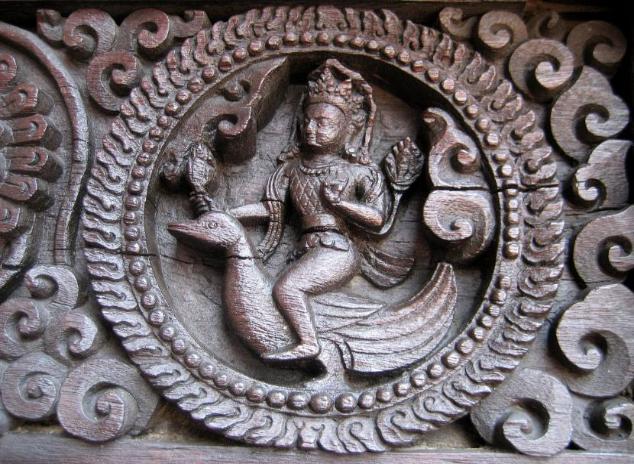
| The popular elephant-god Ganesh is the god of good luck and prosperity |
| The one stone temple, Krishna Mandir, is heavily influenced by northern Indian architecture. The other temples are in the traditional Nepali pagoda style. |
| A pigeon sits upon the folded hands of Garuda |
| The Royal Palace takes up the whole eastern side of Durbar Square and includes the Patan Museum |
| Robin cozies up to an odd-looking lion. Lions are temple guardians, often posted in pairs on all four sides of a temple. |
| The fantastic carvings decorate the roof struts of temples and offer a creative free-for-all. This one seems ready to party! |
| Hindus light butter lamps and place them on the balustrade of Krishna Mandir Temple |
| Bells are a common feature at temples all over Nepal |
| This intricate wooden door carving features sun symbols and Buddha eyes |
| Buffalo guts are strung above the temple door, a grisly tribute to the bloody god Bhairab |
| And this is Bhairab himself, looking to our eyes like a creature from "Where the Wild Things Are" -- or a Hindu Heat Miser! |
| This is the entrance to the Patan Museum (once the Royal Palace). Most agree it's the best museum in Nepal. |
| You'll pass through this elegant entrance courtyard on your way into the museum |
| The courtyard of the museum has some of the most intricately carved and well-preserved windows in Nepal |
| Patan, Nepal |
After a week of being cooped up in our hotel in
Kathmandu because of the Maoist strike, we
were more than ready to do a little sightseeing.
Patan was once a fiercely independent city-
state in the Kathmandu Valley but is now a
southern suburb of Kathmandu located just a
twenty-minute taxi ride away. Patan's Durbar
("Royal") Square is considered by many to be
one of the most beautiful squares in the world.
Lonely Planet says the Unesco World Heritage
site is "arguably the finest collection of temples
and palaces in all of Nepal." It is chock-full of
temples in the pagoda style, as shown at left.
Now you may be thinking, these temples look an
awful lot like Chinese pagodas. And you'd be
right, but not because the Nepalis copied the
Chinese, but rather because the Chinese
copied the Nepalis! It turns out it was a Nepali
architect of the late 1200s named Arniko, born
in Patan, who introduced the traditional Nepali
pagoda style to China. He came to China at the
age of 12 at the invitation of Kublai Khan. Over
time he became a renowned architect. His
pagoda style became all the rage, and that's
why temples all over Asia look the way they do.
Kathmandu because of the Maoist strike, we
were more than ready to do a little sightseeing.
Patan was once a fiercely independent city-
state in the Kathmandu Valley but is now a
southern suburb of Kathmandu located just a
twenty-minute taxi ride away. Patan's Durbar
("Royal") Square is considered by many to be
one of the most beautiful squares in the world.
Lonely Planet says the Unesco World Heritage
site is "arguably the finest collection of temples
and palaces in all of Nepal." It is chock-full of
temples in the pagoda style, as shown at left.
Now you may be thinking, these temples look an
awful lot like Chinese pagodas. And you'd be
right, but not because the Nepalis copied the
Chinese, but rather because the Chinese
copied the Nepalis! It turns out it was a Nepali
architect of the late 1200s named Arniko, born
in Patan, who introduced the traditional Nepali
pagoda style to China. He came to China at the
age of 12 at the invitation of Kublai Khan. Over
time he became a renowned architect. His
pagoda style became all the rage, and that's
why temples all over Asia look the way they do.
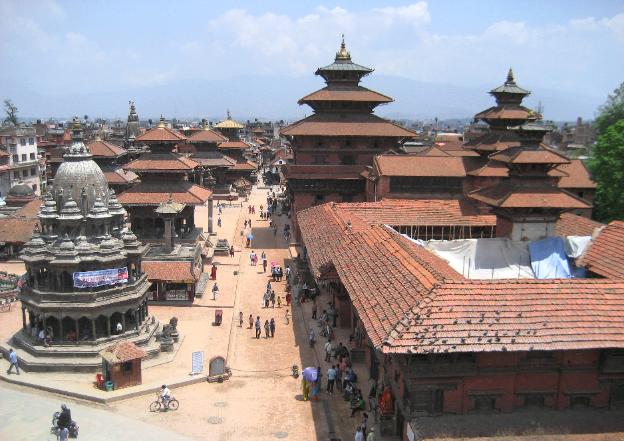
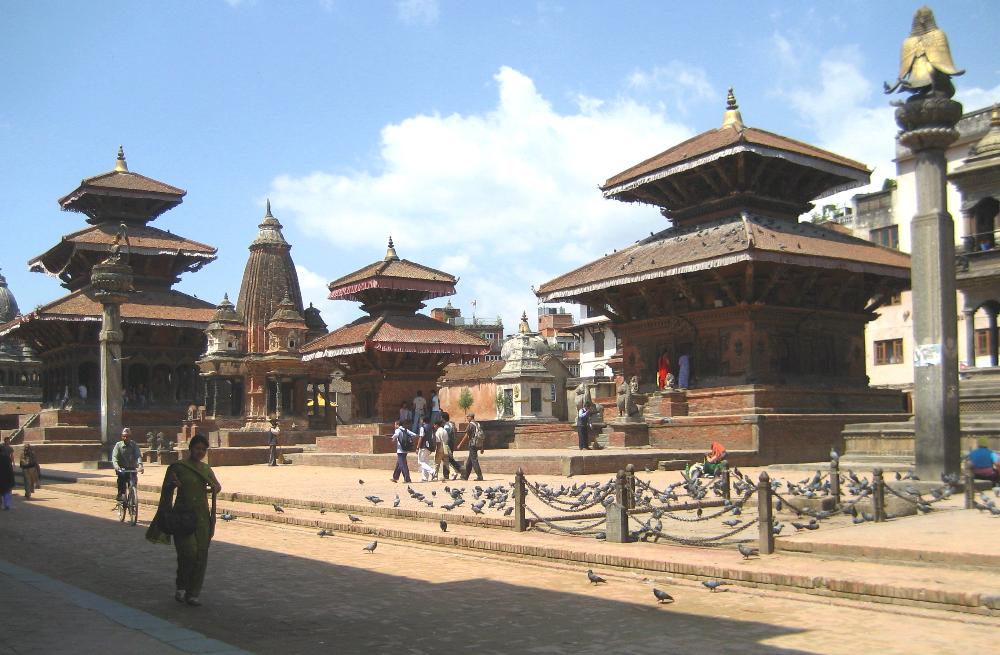
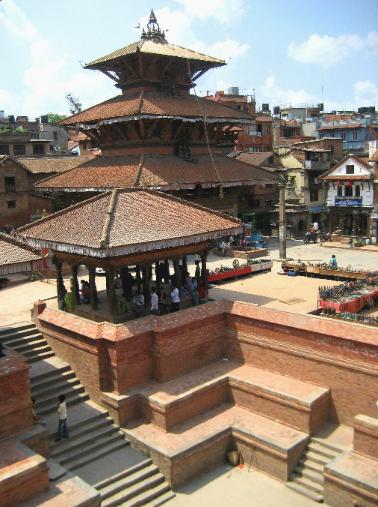
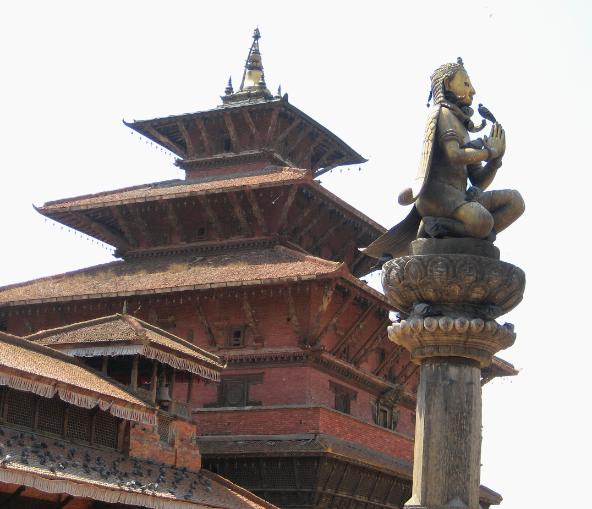
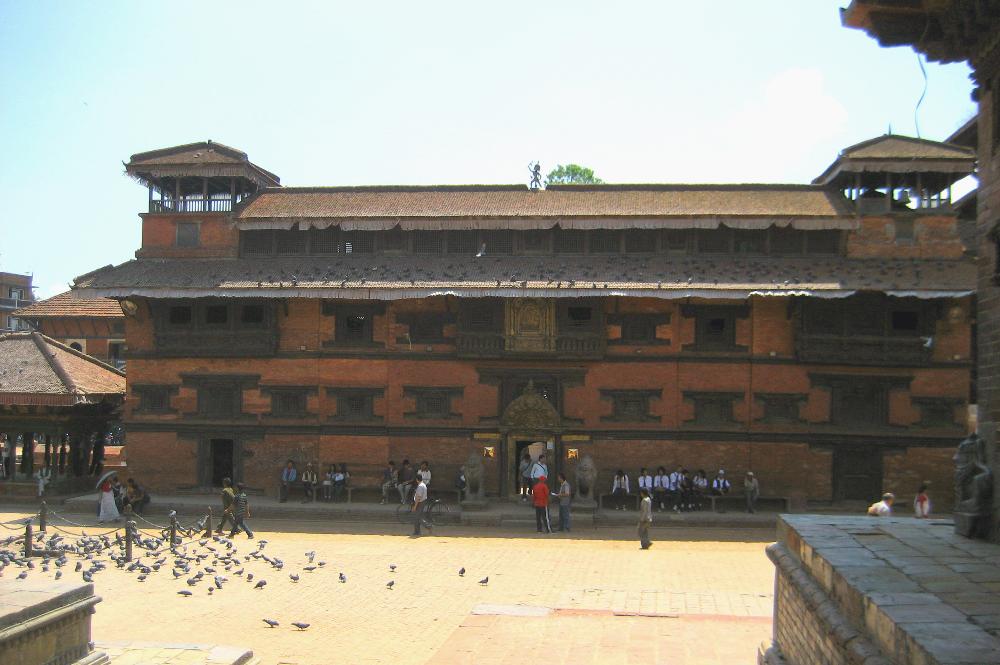
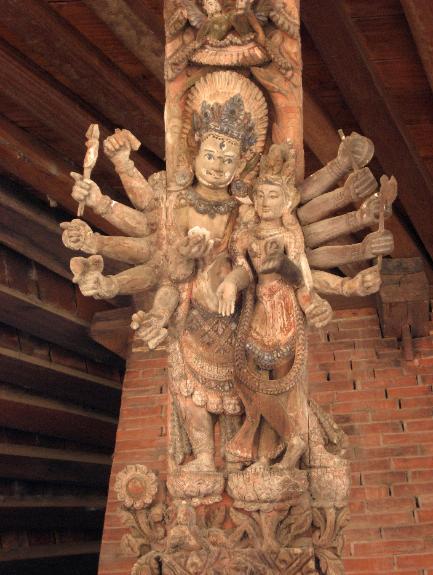
| Striking wooden carvings of gods and goddesses are a feature of Patan |
